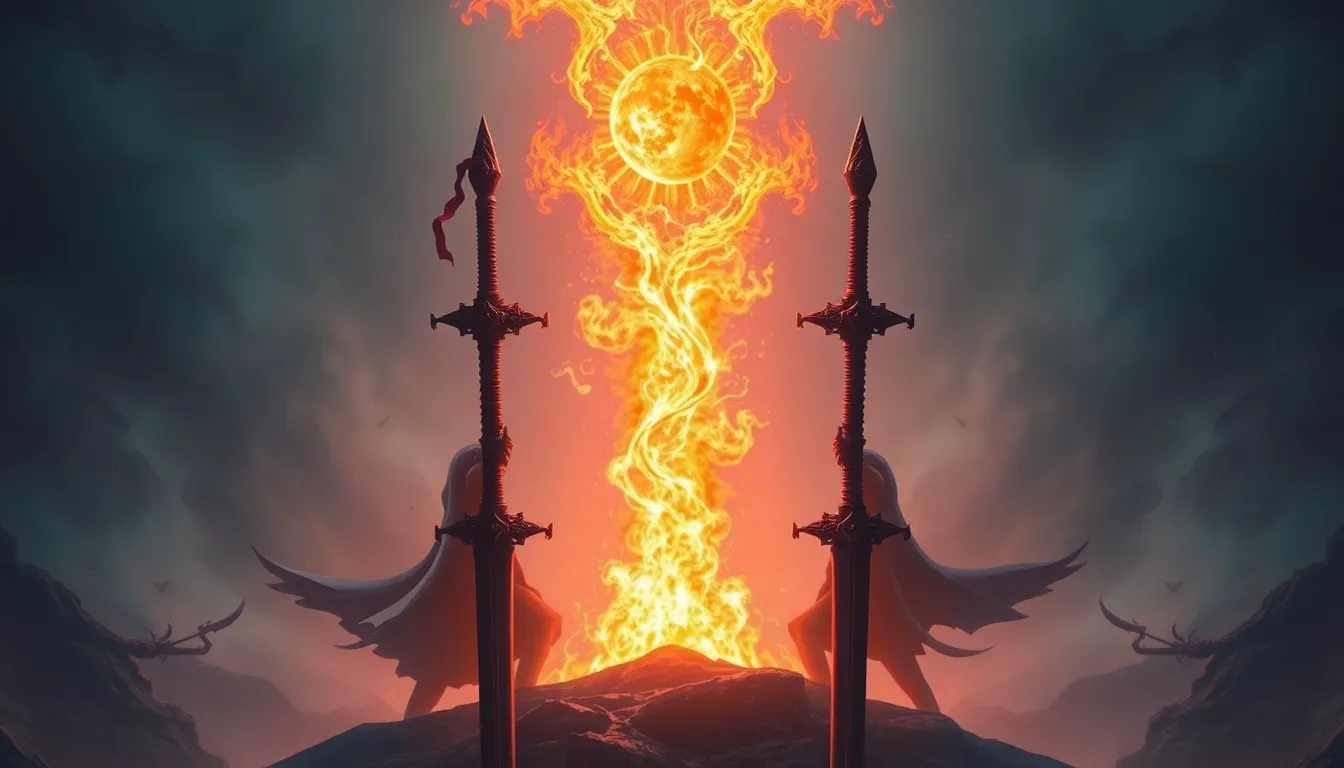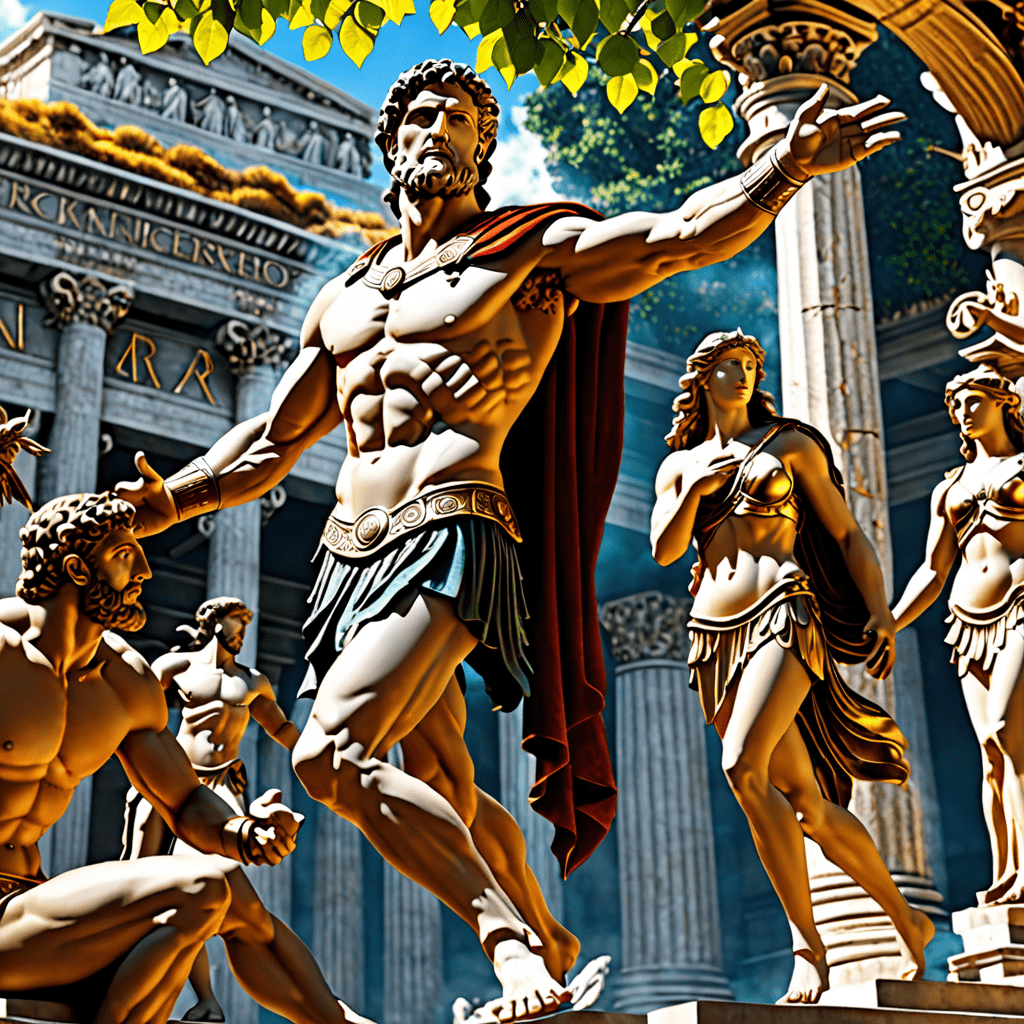Epic Battles: The Legendary Weapons That Changed the Course of Myth
I. Introduction to Legendary Weapons in Mythology
Legendary weapons are often central to mythological narratives, serving not only as tools of combat but also as symbols of power, destiny, and the divine. These weapons transcend mere physicality, embodying the spirit and strength of heroes and gods. In this article, we will explore some of the most iconic legendary weapons, their origins, and the epic battles that defined their legacies.
II. The Origins of Legendary Weapons
The creation of legendary weapons often intertwines with the cultural context and historical backgrounds from which they emerge. Many of these weapons are products of divine craftsmanship or imbued with supernatural powers, enhancing their significance in the narratives they inhabit.
- Cultural Context: Each weapon reflects the values and beliefs of the society that produced it.
- Craftsmanship: Often crafted by gods or skilled artisans, these weapons possess unique qualities that make them extraordinary.
- Symbolism: Many weapons symbolize broader themes such as justice, power, and the eternal struggle between good and evil.
III. Excalibur: The Sword of Destiny
Excalibur, the legendary sword of King Arthur, represents the epitome of mythical weaponry. According to legend, Arthur received Excalibur from the Lady of the Lake, marking him as the rightful king of Britain.
The sword’s origins are steeped in themes of destiny and power. As Arthur wielded Excalibur, it influenced the balance of power in Camelot, enabling him to unite the realm against chaos and tyranny.
In contemporary culture, Excalibur symbolizes leadership and the heroic ideal. It has been featured in countless adaptations of Arthurian legend, reinforcing its status as a cultural icon.
IV. Mjölnir: Thor’s Hammer
In Norse mythology, Mjölnir is the hammer wielded by Thor, the god of thunder. Crafted by dwarven smiths, it possesses the ability to level mountains and is a formidable weapon against the giants who threaten the gods.
Throughout various epic battles, Mjölnir has played a crucial role, most notably in the defense of Asgard. Its power is not solely destructive; it represents protection, fertility, and the cyclical nature of life and death.
Today, Mjölnir continues to resonate in popular culture, often symbolizing strength and resilience against adversity.
V. The Bow of Odysseus: A Test of Kingship
The story of Odysseus and his legendary bow is one of the cornerstone tales from Greek mythology. After a long absence, Odysseus returns to Ithaca to reclaim his throne from suitors who have overrun his home.
His bow serves as a test of kingship; only the true ruler could string it and shoot an arrow through twelve axes. This act not only demonstrates his strength but also symbolizes rightful rule and the enduring bond between a leader and his people.
The impact of Odysseus’s bow on Ithaca is profound, as it signifies the restoration of order and justice, crucial for the well-being of the kingdom.
VI. Durandal: The Sword of Roland
Durandal, the sword of the legendary knight Roland, is steeped in myth and heroism. According to the “Chanson de Roland,” this sword is imbued with magical properties and represents the valor and loyalty of its wielder.
In the Battle of Roncevaux Pass, Roland uses Durandal to defend Charlemagne’s rear guard against overwhelming odds. Despite his ultimate sacrifice, the legacy of Roland and his sword endures in European folklore, symbolizing honor and courage in the face of despair.
VII. The Trident of Poseidon
Poseidon, the god of the sea, wields a powerful trident that grants him dominion over the oceans. This weapon is not just a symbol of his authority but also a tool of immense destructive potential.
The trident has played pivotal roles in battles among the gods and between gods and mortals. It is said to have the power to create storms, earthquakes, and even raise islands from the sea.
Symbolically, the trident represents control over the unpredictable nature of the ocean, reflecting humanity’s eternal struggle against the forces of nature.
VIII. The Spear of Destiny: A Tool of Fate
The Spear of Destiny, also known as the Holy Lance, has a rich history steeped in legend and mystery. According to lore, it is the spear that pierced the side of Jesus during the crucifixion, imbuing it with extraordinary significance.
Throughout history, the spear has been associated with various battles and figures, often believed to bestow power and control over destiny itself. Many rulers claimed that possessing the spear would grant them invincibility and the divine right to rule.
Its connection to fate and prophecy underscores the notion that legendary weapons are not merely instruments of war but also embodiments of the larger forces at play within human history.
IX. Conclusion
Legendary weapons are more than just tools of war; they are integral to the narratives that shape our understanding of heroism, power, and fate. From Excalibur to Mjölnir, each weapon carries with it a story that transcends time, reflecting the values and beliefs of the cultures from which they originate. These legendary arms not only influence the outcomes of epic battles but also leave an indelible mark on human imagination and cultural identity.



